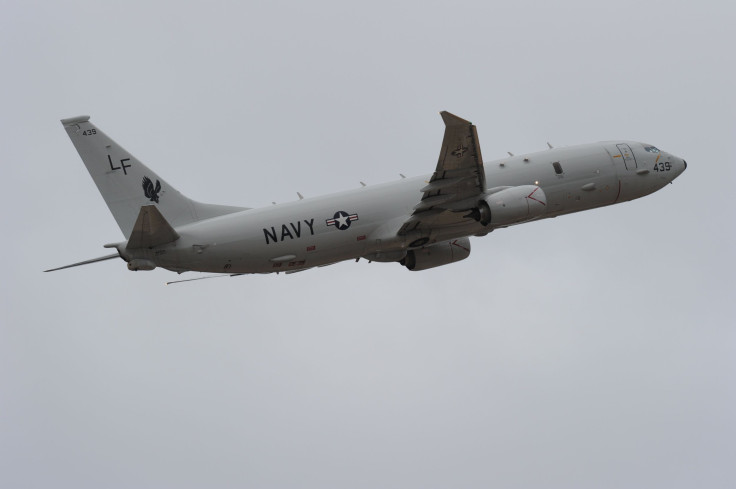Russian Su-27 Jet's 'Unprofessional' Intercept Of US Surveillance Aircraft Second In 2018

A Russian Su-27 jet came within 20 feet of a Navy P-8 Poseidon — a U.S. surveillance jet — as both of them flew over international waters on the Baltic Sea on Tuesday.
The U.S. military did not confirm the details of the incident, although the occurrence was insinuated via an email to the Navy Times.
“U.S. Navy ships and aircraft routinely interact with military units from other countries,” the spokesman for Navy forces in Europe, Lt. Cmdr. Zach Harrell, wrote. “If an unsafe interaction occurs, we will provide more information at that time.”
The pilots flying the P-8 Poseidon told officials that they never felt threatened or unsafe by the maneuvers of the Russian jet, although the intercept was deemed “unprofessional.”
This is the second such too-close-for-comfort intercept that occurred in the last four months. In January, the Russian Su-27 jet came within five feet of the U.S. EP-3 Aries spy plane, “crossing directly through the EP-3’s flight path,” according to a statement from the Navy’s 6th Fleet.
The intercept was so risky that the U.S. spy plane was forced to fly through the jet wash left behind by the Russian Su-27. That incident — which lasted for two hours 40 minutes — occurred over the Baltic Sea too, where American and Russian jets routinely fly close to one another but in a professional manner.
“The Russian military is within its right to operate within international airspace, but they must behave with international standards set to ensure safety and prevent incidents,” a statement released by the U.S. Navy said at the time. “Unsafe actions increase the risk of miscalculation and midair collisions.”
The Russian military was accused of “flagrantly” violating international law and risking a midair collision at the time. The incident was characterized as “the latest example of Russian military activities disregarding international norms and agreements” by State Department spokeswoman Heather Nauert.
Before January, a similar incident took place in November 2017, when a P-8A Poseidon was forced to fly in a Russian jet’s afterburners over the Black Sea, after the latter flew just 50 feet ahead of the former. The incident caused the P-8A Poseidon to roll 15 degrees and experience “violent turbulence.”
“The Russian SU-30 crossed in front of the P-8 (from right to left) in afterburner causing a 15 degree roll and violent turbulence,” United States European Command spokeswoman Meghan Henderson said in an email regarding the November incident. “The P-8 was forced to fly through the jet wash of the SU-30.”
The latest incident came at a time when tension between Washington D.C. and the Kremlin are on an all-time high after Russian foreign minister Sergey Lavrov accused the U.S. of trying to divide Syria.
During a meeting with his counterparts from Iran and Turkey, Lavrov said the recent U.S.-led missile strikes on Syria "seriously aggravated the situation,” adding that Trump’s statements about supporting the rights of the Syrian people "are only words that, apparently, cover plans for reformatting the Middle East and plans for dividing Syria into parts.”
© Copyright IBTimes 2024. All rights reserved.






















